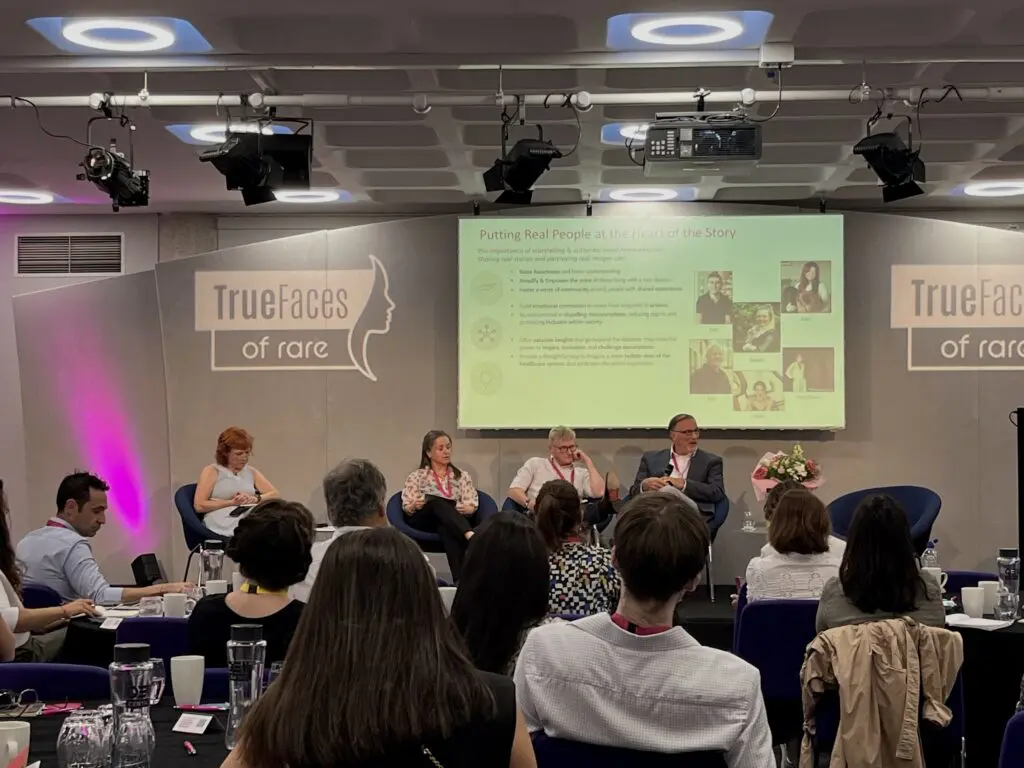23 July 2025
Charlotte Chaw, Senior Marketing Manager at Clariness, reflects on key insights and learnings from a recent industry event.
Last week, I had the pleasure of attending Chiesi’s event ‘True Faces of Rare: Shaping Visual Representation Together’ co-hosted with Metabolic Support UK. An event that brought together patient voices and industry experts to redefine how rare diseases are portrayed in patient materials, the media and beyond.
The discussions deeply resonated with me, particularly because the themes align closely with our mission at Clariness to amplify patient voices and improve engagement in healthcare.
I wanted to share some reflections and key takeaways from this insightful event.

Why visual representation in rare diseases matters
One of the most compelling points discussed was the harm caused by inaccurate or stereotypical visuals. When patients with rare diseases repeatedly see generic, emotionally empty or misleading imagery, it contributes to identity struggles, fosters mistrust and deepens feelings of isolation. Representation goes beyond visibility – it’s about dignity, empathy and authenticity.
Guest speakers with rare diseases shared a clear message, they emphasized a desire to be seen as more than just a diagnosis. They want to be recognised as people with unique stories, experiences and identities, not just as symbols of a condition.
Celia Chartres-Aris, Disability Rights Advocate, reminded us that people living with rare conditions want to be seen as more than their diagnosis.
Oliver Bromley, Patient Advocate, highlighted how people with visible facial differences are often portrayed as villains in images and media. Despite leading a normal life himself, he shared that he still faces discrimination because of his appearance.
The problem with stock and AI-generated imagery
A recurring concern was the prevalence of stock photography and, increasingly, AI-generated images. Both are often devoid of emotional depth and cultural nuance. Patients shared that they rarely see themselves reflected in these visuals, which in turn reduces their willingness to engage with content, campaigns or healthcare materials.
Interestingly, AI-generated imagery is compounding the problem, as it tends to recycle existing biases and inaccuracies found in online datasets. Many users fail to leverage AI tools effectively to create authentic, emotionally resonant visuals. When misused, these technologies often amplify stereotypes rather than challenge them.
Practical barriers to using real patient images
While there is widespread recognition of the importance of authentic imagery, there are also real barriers to implementation. Delegates identified several challenges, including:
- Time and budget constraints
- Limited internal resources
- Management resistance
- Complex consent and ethical considerations
Chiesi shared findings from their research with rare disease patients: on a scale of 1-10, patients rated the importance of accurate visual representation at 8.2. Many also stated they’re less likely to engage with content where they don’t see themselves reflected.
Moving forward: What needs to change
Using real patient images comes with its own complexities, such as the risk of “image fatigue” due to a limited pool of content, and the need for transparent consent processes. This includes specifying timeframes, geographic usage limits and providing patients with clear options to withdraw their consent if desired.
To address these issues, delegates identified two key needs:
- A patient-led content review process
Patients should have a say in how they’re represented visually to ensure authenticity and relevance. - A co-developed image bank
Creating an image repository in collaboration with patient support organisations could help healthcare companies access diverse, genuine imagery while respecting patients’ rights and preferences.

Final thoughts
Visual representation is more than aesthetics – it’s about respect, trust and inclusion. At Clariness, we’re committed to learning from these insights and ensuring that the people behind the diagnoses are portrayed in ways that are both real and respectful.
If you’re looking to improving representation in your own content or campaigns, collaborating with patient communities and companies that collaborate with them is a great place to start.
Clariness works with patients by improving their involvement in clinical research and amplifying their voices throughout the clinical trial journey.
If you’d like to learn more about what was discussed during the event, please contact us here.